This might be the easiest blanket you ever made.
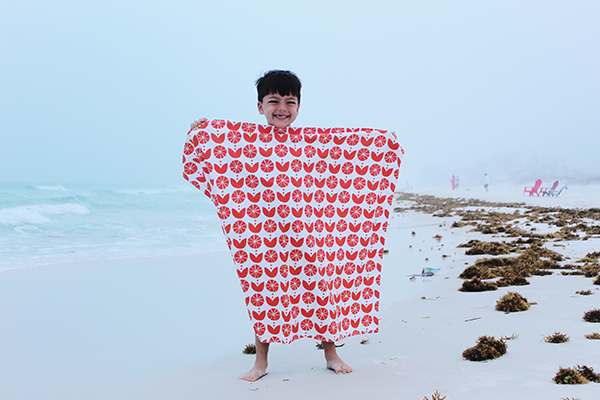
This is a fun project and can be made in less than an hour. I think this blanket is the perfect gift and it makes for a great beach blanket or daily lap blanket.
Do you need a quick present for an event you are attending? Know a new Mom? Are you new to sewing and want a simple project to work on your straight stitches? Have some cute fabric and a little kid who needs a new quilt.. Then, this blog post is for you!
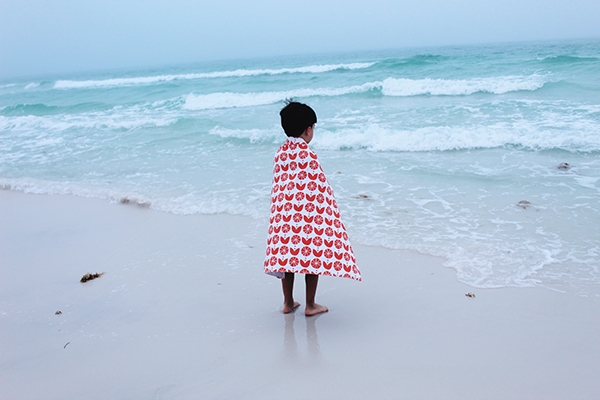
A bit about this blanket..
I chose to create this blanket based on a recent family trip to the Florida Panhandle. The weather was going to be crisp and not quite beach weather. I thought that a small cotton blanket would make the perfect cover up. Plus, if the weather got warm enough to go in the water, the blanket could also be used to lay on the sand.
When I was thinking about this quilt and tutorial, I had just received a yard of fabric I designed on Spoonflower. I really wanted to make something fun with it. I wasnt sure what tomkae b/c the motifs are quite large. Then a quilt popped into my brain. Do you want to see more? Head over to my Spoonflower Shop to see all my designs.
The fabric in this post is called “Happy Pinwheel”. It is based on a block print that I create and the block print color is blood orange. I typically do not like the color orange, but this spoonflower orange turned out amazing.
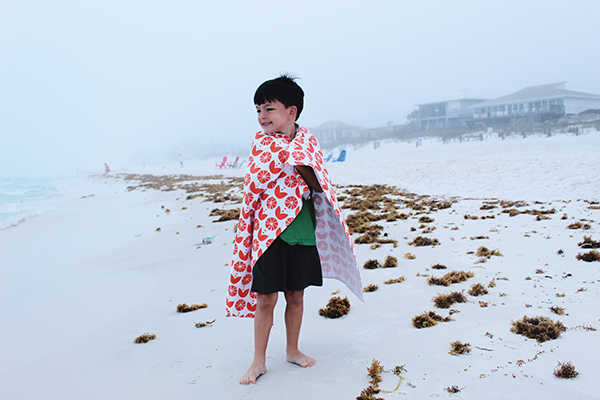
Materials:
- 2 yards – 1 yard for the main piece and 1 yard for the lining
- Quilting supplies – rotary cutter, ruler and mat
- Sewing supplies – pins, thread, scissors, measuring tape, disappearing fabric ink pen/ pencil
- Iron and ironing board
- Sewing machine
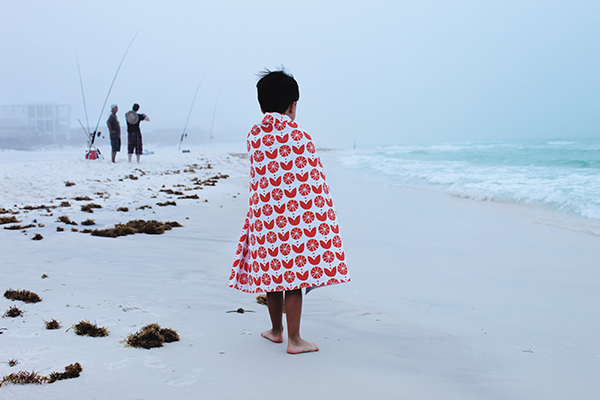
A few things to consider:
- Make sure you have enough fabric for your seam allowance. When you are drawing the perimeter, remember that you need at least 1/4″ for the seam allowance.
- The fabric may not be cut evenly and/ or have uneven cut line. if this is the case, use the selvedge as a reference point. The selvedge “should” be the most straight piece one the fabric.
- Buy a quilting ruler for your sewing supplies. Creative Grids is a great brand to look for. I have many lengths and widths in my studio and use them for sewing AND craft projects. These not only have grips on the bottom that help “hug” your fabric, but the grid feature help ensure drawing precise and accurate lines.
Let’s get started – Here are the simple steps:
Step 1 – First, lay your fabric on the ground. Place the 2 yards on top of each other. Match at one of the selvedges. Hand press any wrinkles out.
Step 2 – Next, use the selvedge as your starting point and draw a line perpendicular to the selvedge. Using a quilting ruler is a great option, as you can use the grid and make sure everything is square.
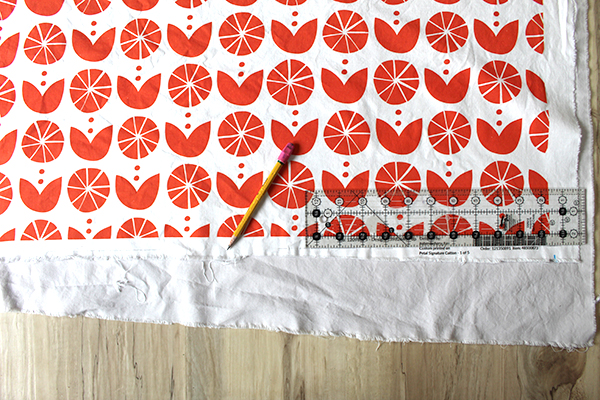
Step 3 – Draw the line as far across as you can. The fabric may not match each other or be evenly cut, so only draw the line to where you have both the lining and main fabric underneath.
Step 4 – Continue drawing the perimeter of the blanket, using the previous line as a reference point.
Step 5 – Cut the fabric. If you have a mat, cut using a rotary cutter. If you do not have a mat, cut using sewing scissors. To ensure you cut straight and even, keep the scissors touching the floor/table the whole time you are cutting ie) do not raise them in the air.
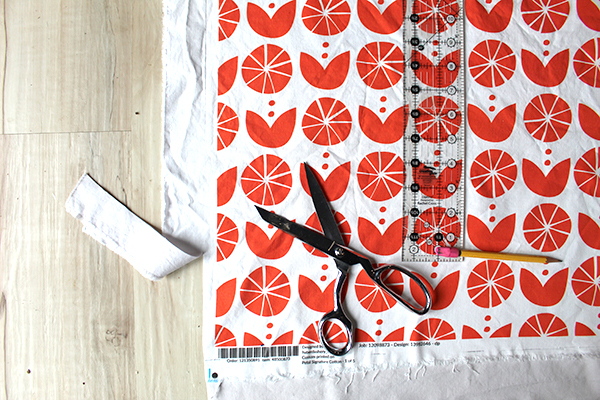
Step 6 – Turn the fabric pieces to be right side facing each other. Pin in place.
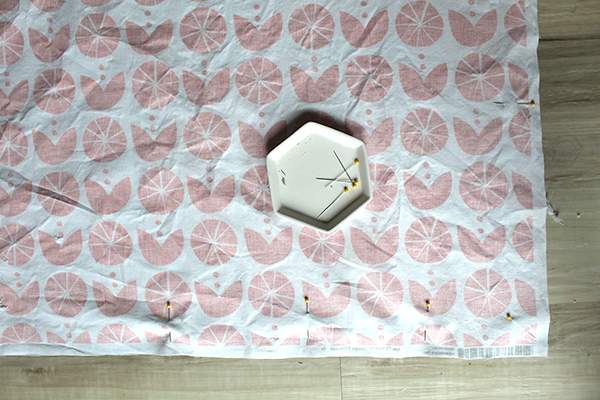
Step 7 – Bring to your sewing machine and sew together with a 1/2″ seam allowance. Leave a 10″ opening along one edge. This will be to turn the blanket right side out.
Step – 8 – Press the seams.
Step 9 – Trim your corners. This eliminates bulk in the corners and makes for nice crisp points. If you are new to sewing, start implementing this with all your corners and you will find they turn really nicely.
Step 10 – Pull the blanket right side out through the opening. Press the seams again. Turn under the seam allowance and press the 10″opening. Pin in place.
Step 11 – Finally, Take the blanket back into your sewing machine and edgestitch around the outside. This makes for a nice trim detail and also sewing the opening closed. To add extra details, add a second row of edgestitching.
That’s it!




Leave a Reply